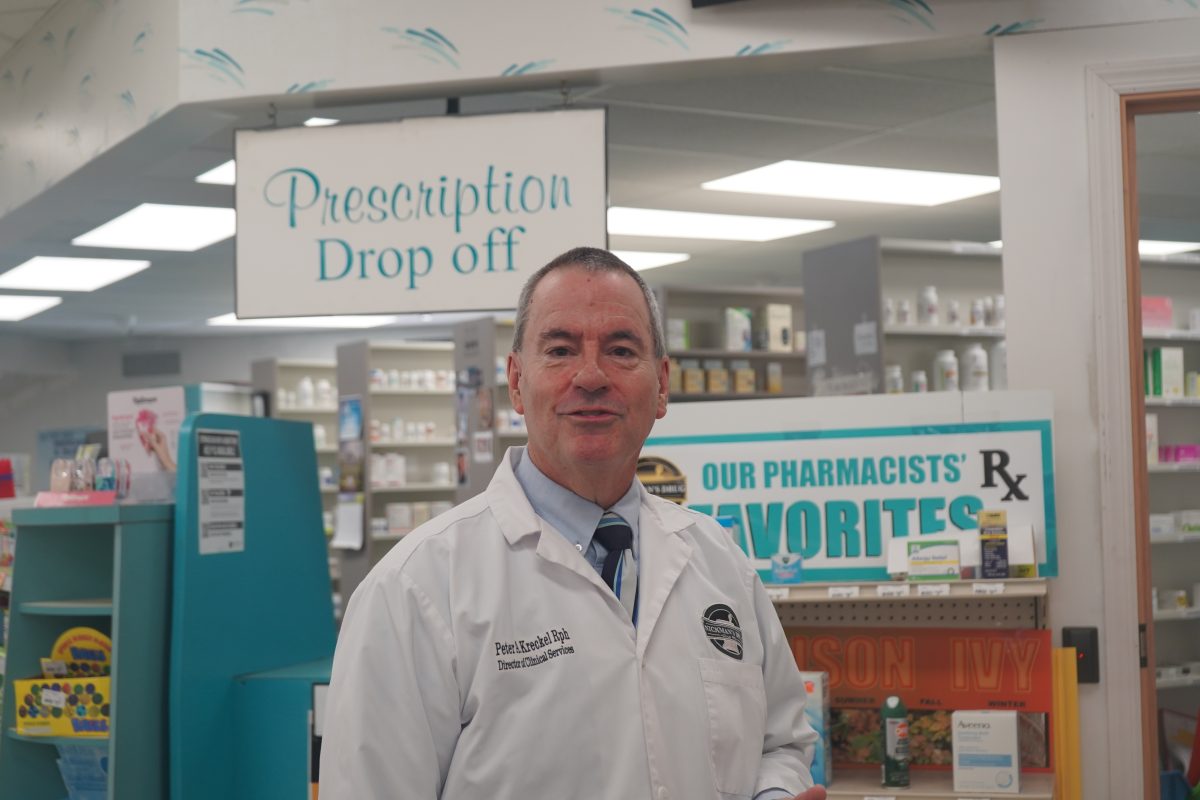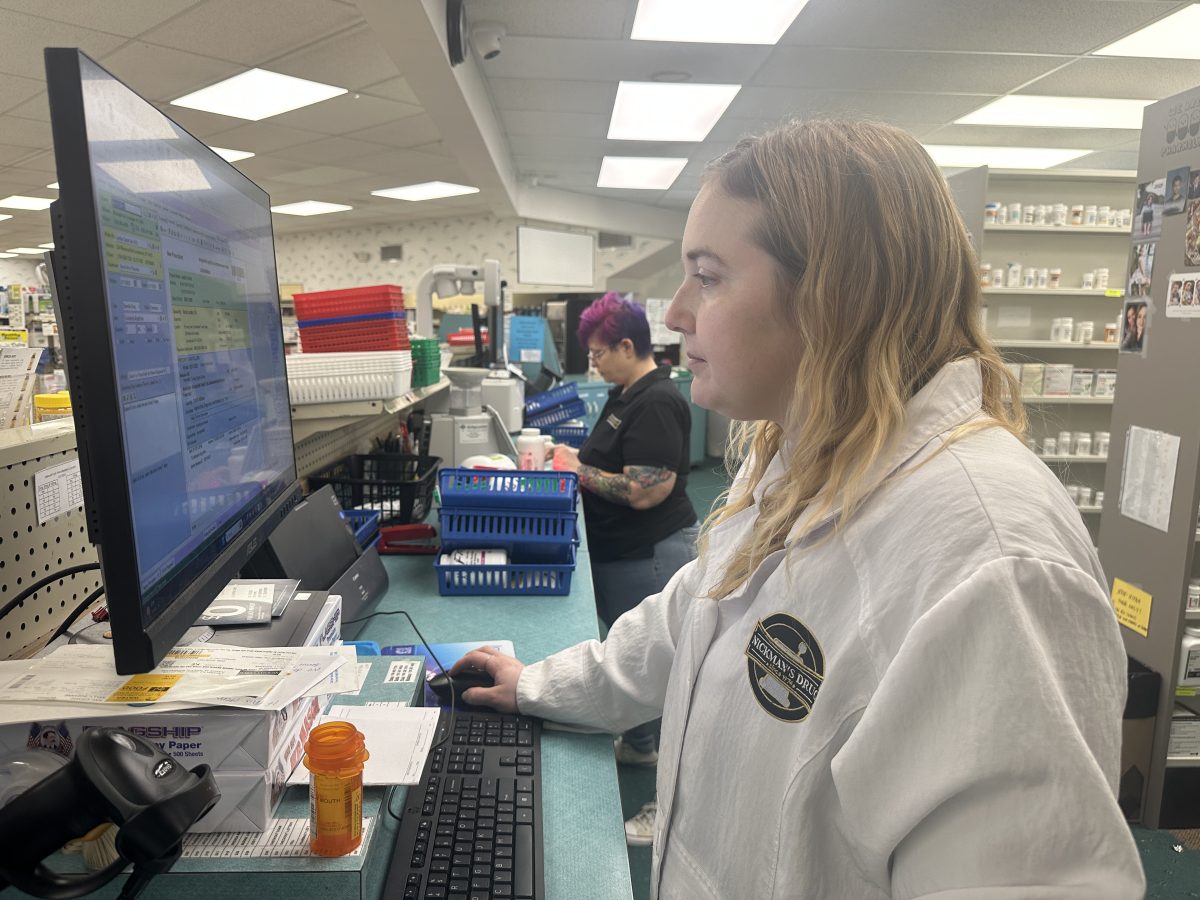Americans struggling with cost of prescription medications
In 2016, Kathy Davis of Canonsburg underwent heart surgery, but complications left her with right heart failure, a condition where the right ventricle is too weak to pump enough blood to the lungs.
Over the years, her condition has worsened. In 2023, she was hospitalized for atrial fibrillation. Doctors prescribed Eliquis to prevent blood clotting, and a pharmacist told Davis the cost was $700 per month.
“I was absolutely panicked. I said, ‘Well, good luck to me because I’m not going to take it,” said Davis, who, in addition to Eliquis, takes 10 other medications, including Jardiance to prevent heart failure (list price, $700) and Tikosyn for her heart rate (list price, $600). “Most of my other medications are doable through my health insurance through work, but I just can’t afford the big three – the Eliquis, Jardiance and Tikosyn, and unfortunately, a lot of programs are income-based and I make too much to qualify but not enough to afford (the drugs). So, really, it’s been more than a year-and-a-half of me researching, with the help of one of my girlfriends and my children, to find out how I can find the best price for my meds.”
Davis’ experience is one that millions of Americans have shared.
A report from the Centers for Disease Control and Prevention showed that in 2021, 9.2 million adults between 18 and 64 who took at least one prescription medication said they tried to save money by skipping doses, taking less than prescribed, or delaying a prescription refill. That number represents 8.2% of adults who did not take the prescriptions they needed.
Similarly, according to a survey last year by the health policy nonprofit KFF, nearly 3 in 10 Americans struggle to afford the medications they need, and a recent RAND Corp. study found that U.S. drug prices were at least 2.56 times higher than those in 32 comparable countries.
In America, said pharmacist Peter Kreckel, director of clinical services at Nickman’s Drug in the Fayette County community of Lemont Furnace, a hodgepodge of practices by drug companies, insurance companies, and pharmacy benefit managers (PBMs) have created a system where U.S. prescription drug prices are significantly higher compared with prices in other high-income industrialized countries, and patients bear the brunt of high medication costs while small, independent pharmacies are losing money on transactions.
“Drug prices are ridiculous in this country because they are,” said Kreckel. “Reform is necessary. It seems things get more expensive the more layers of bureaucracy we lay on them.”
Kreckel’s son, Philip, a data analyst for a bank, who is diabetic, moved his family to Frankfurt, Germany, in part because of the lower cost of prescription medications.
A box of semaglutide (Ozempic) from Nickman’s wholesaler, for example, costs $963, while the cost at Philip Nickman’s pharmacy in Frankfurt is $86. The price was the same in Austria and Slovakia.
Pharmacist Chris Antypas, who owns four pharmacies – including Asti’s pharmacies in Washington and South Hills – and is the outgoing president of the Pennsylvania Pharmacists Association, described the formula that the pharmaceutical industry uses to determine the cost of prescription drugs as “broken.”
“The health-care system is broken, and it’s not working for patients, and it’s definitely not working for those delivering care, including doctors and pharmacists. It seems to be working only for the organizations that don’t actually provide care,” said Antypas. “So you end up seeing these people sourcing their medications at four or five pharmacies in order to find the cheapest drugs.”
That’s exactly what Davis did.
She purchases her prescription meds from places including Amazon Pharmacy and Cost Plus Drugs (co-founded by businessman Mark Cuban to lower prices for generic drugs by removing the middlemen, including PBMs). Earlier this week, Davis qualified for Allegheny Health Network’s Care Partners, and was informed her co-pay for her ” big three drugs” would be zero.
“It’s life-changing. I sat and sobbed when I found out,” said Davis.
Brooke Spino, a pharmacist at Highmark who works with AHN primary care providers, cautioned that opting not to take needed medications can result in worsening health conditions and said there are creative solutions – including AHN’s Care Partners – that can help people get the medicine they need.
One of the options, she said, is to talk with your doctor and pharmacist if you’re hit with an unaffordable price for medication.
“I would want a consumer to know to not suffer in silence, and for them not to think they’re stuck on an unaffordable medication regimen without any avenue for a solution. I want them to know that there is help out there available, to talk to their providers, to find solutions and ensure that they are on an appropriate regimen,” she said.
Other strategies: generic drugs, when available; programs like PACE, Medicare’s Extra Help, and discount coupons.
Antypas said much more must be done to rein in prices for Americans, and that consumers should demand reform.
“Patients need to push back and raise their voices to the legislators who need to step in. I can’t say enough about how critical it is that they make their pain known to their legislators who can change this,” said Antypas. It”s such a convoluted system. You have all these hands in the cookie jar, and the pharmacy is upside down. We’re actually dispensing the medication, everyone else is an administrative piece. This is a super complicated arrangement for how money flows in health care.”
There have been efforts.
As part of the Inflation Reduction Act signed in 2022, drug companies have agreed to lower the price of 10 prescription medications for people with Medicare Part D. The negotiated prices will go into effect on Jan. 1, 2026. Additionally, out-of-pocket expenses for prescription drugs are now capped at $2,000 for people with a Medicare prescription drug plan. And enrollees have the option to spread out their out-of-pocket costs in monthly payments over the course of the year.
Last week, U.S. Sen. John Fetterman (D-Pennsylvania) was among a bipartisan group that introduced the Capping Prescription Costs Act, legislation that would cap the annual out-of-pocket cost of prescription drugs at $2,000 for individuals and $4,000 for families with private insurance.
And earlier this month, U.S. Sen. Chuck Grassley (R-Iowa) and U.S. Sen. Maria Cantwell (D-Washington) reintroduced two bipartisan bills to combat the high cost of prescription drugs and provide greater transparency of PBMs.
Last year, Gov. Josh Shapiro signed bipartisan House Bill 1993 into law, providing stronger protections for patients in Pennsylvania and increased regulatory oversight of PBMs, saying, “Pennsylvanians are getting screwed by the high cost of prescription drugs and too many rural pharmacies have been forced to close their doors, while the few PBMs that dominate the market are raking in billions.”
Since January 2024, over 150 pharmacies have closed in Pennsylvania, and the Pennsylvania Pharmacists Association estimates that over 70 of those pharmacies are independently run.
For her part, Davis encouraged patients not to give up.
“It’s frustrating, it’s maddening, it’s sad, really. Oftentimes, the people who need help the most are seniors, and they may not be tech savvy, they may not have advocates or kids to help them, or they may not have medical advocacy to provide them with information,” Davis said. “I can see where people are faced with buying groceries or paying bills, or buying their medication. It’s an absolute game of chess, and you have to look all over the place to find the best prices. A lot of it is just not being afraid to ask for help. I was embarrassed when I said I couldn’t afford the Jardiance.
“I feel like I have learned so much that I could become an advocate for helping people find the cheapest drugs, and help people figure out ways they can afford their medications. My story had a happy ending, but not everyone does.”



